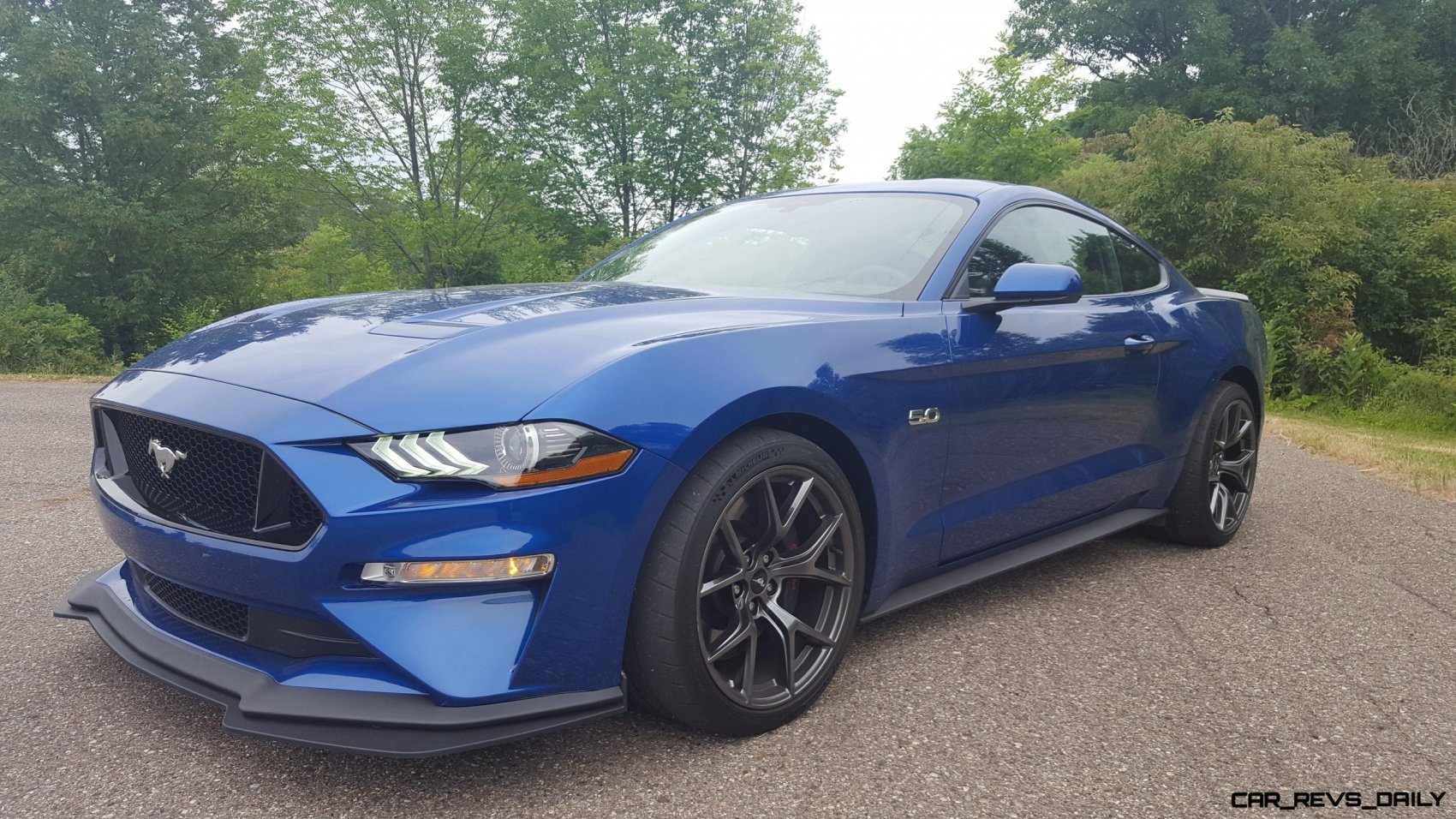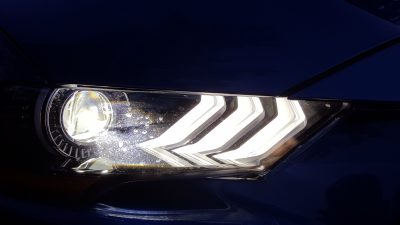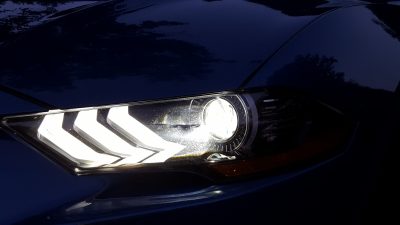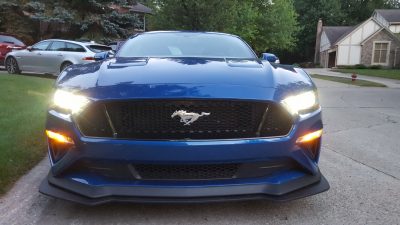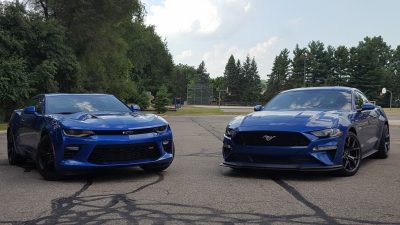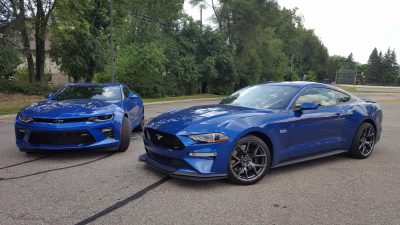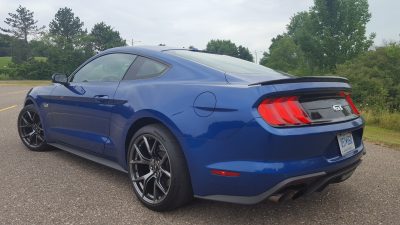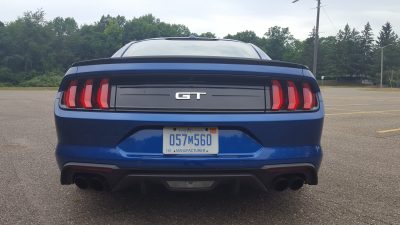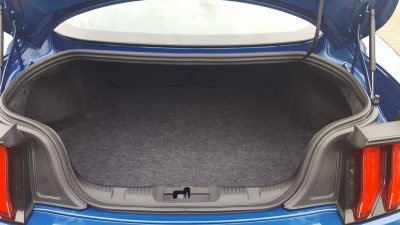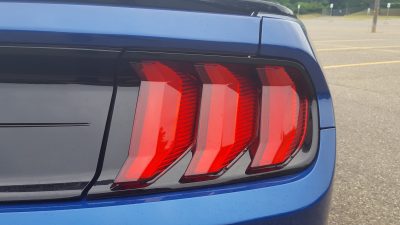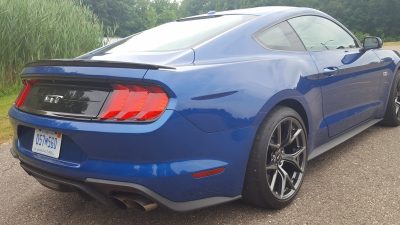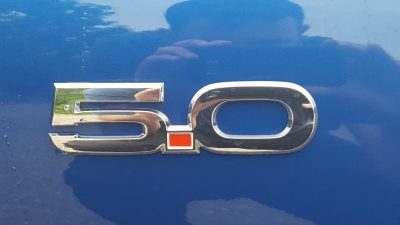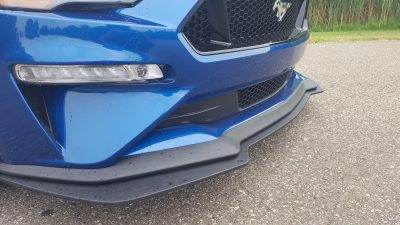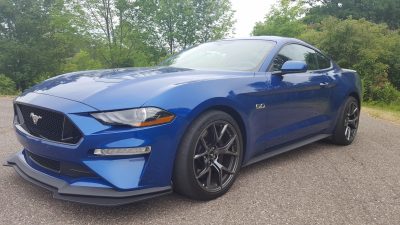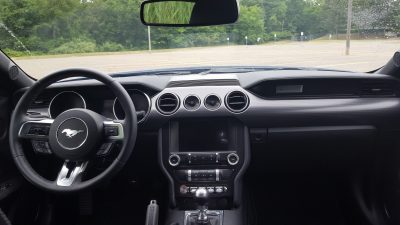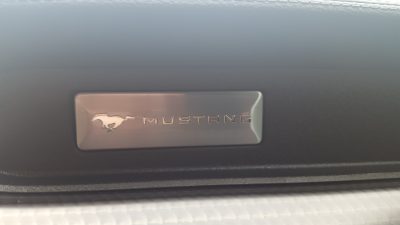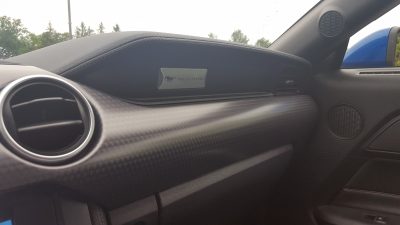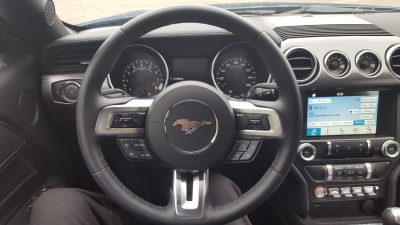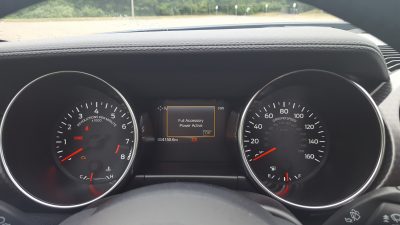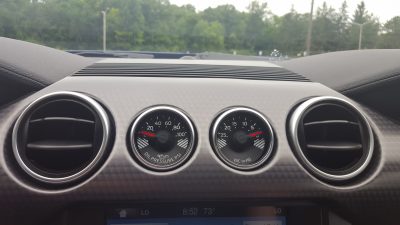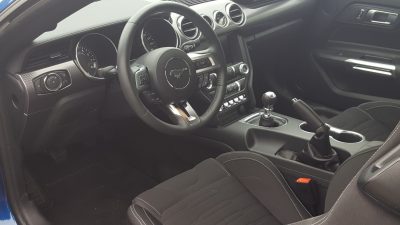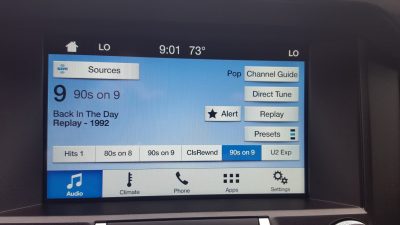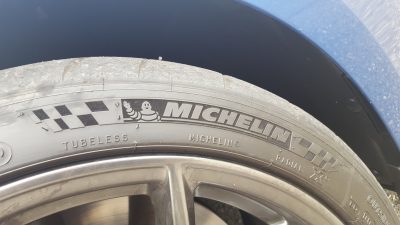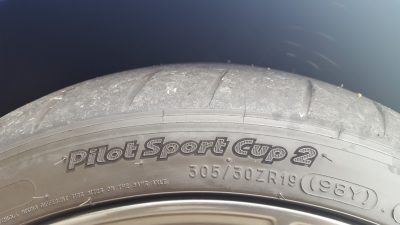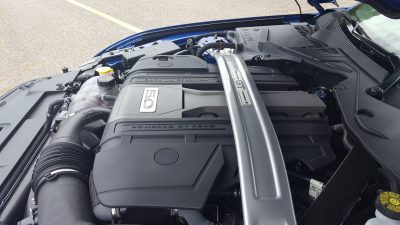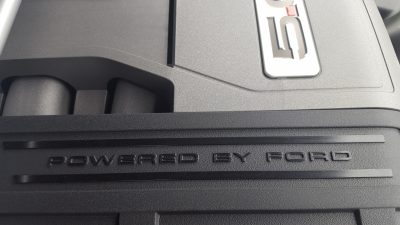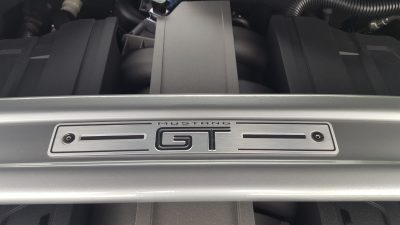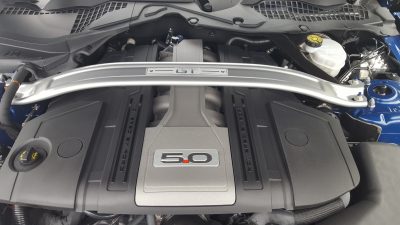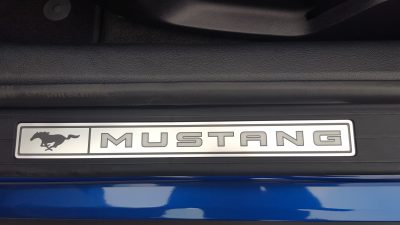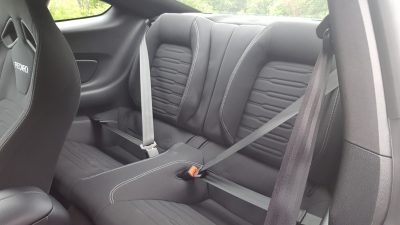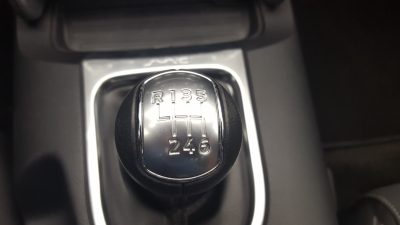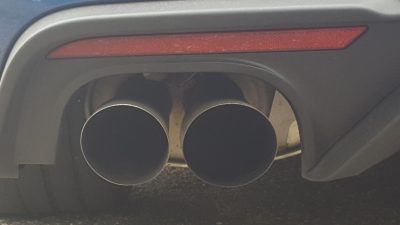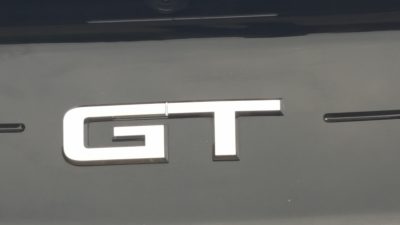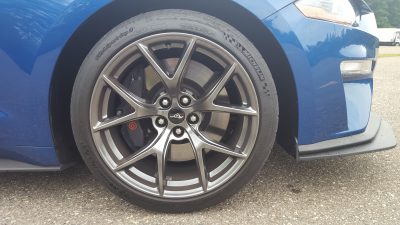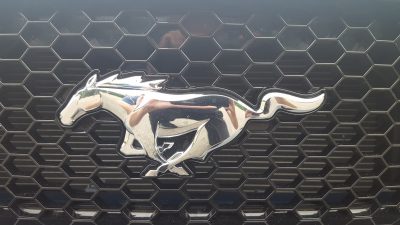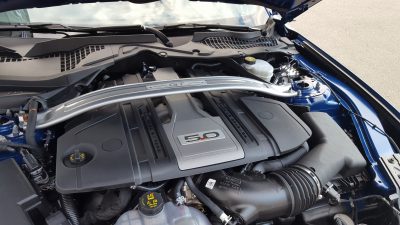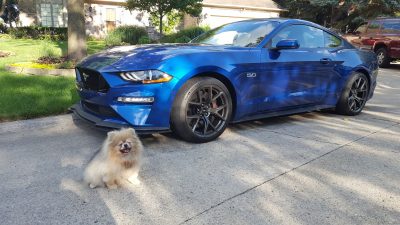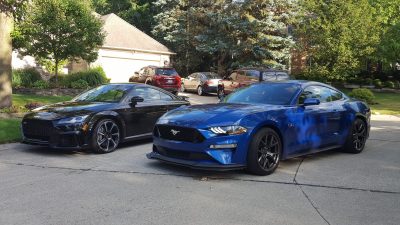The Rivalry, no we’re not talking about the annual Michigan vs Michigan State football game (a semi-official holiday here in the Metro Detroit office.)
Rather, it’s the equally legendary rivalry between the Ford Mustang and the Chevrolet Camaro.
Both of these pony cars have been slugging it out with each other since the 1960s, with the duo constantly trying to outdo each other in style, performance and innovation.
Recently, we had the opportunity to explore both sides of this rivalry with the Chevrolet Camaro SS 1LE (review) and the subject of our attention this week, the 2018 Ford Mustang GT Performance Pack 2. But is it really the ultimate solution to besting the 1LE both on the track and in everyday driving? Or is it still not enough to match its sworn enemy in outright capability.
Track Focused Styling…With a Price:
The exterior styling of our Lighting Blue Metallic PP2 tester certainly looked ready for a weekend track day. Building on the beefy lines and delicious undertones that define the standard GT, the PP2 package does not radically depart from this simple DNA, and the sleek blue paint also caused many passers-by to stop and take a second glance at our tester everywhere we went. This included a trip to Woodward Avenue for a dinner date with my fiancé Emily. The bigger wheels that adorn this package help give the Mustang a much more imposing profile, and the bigger front splitter also allows it to channel its sporting intentions loud and clear. However, that splitter also caused a problem at our office, with our tester being unable to make the climb up our steep driveway due to the low ground clearance that it creates. This forced our tester to spend its evenings resting on the street in front of our house to avoid damaging this particular component.
Overall, the package is very cohesive, and certainly one ups the Camaro 1LE slightly in aesthetic appeal. With the fore-mentioned 1LE not present during the Mustang’s stay with us, we instead opted for the next best thing, and enlisted the services of my brother’s 2017 Camaro SS 50th Anniversary edition for an impromptu comparison. When the PP2’s track focused add-ons are removed from the equation, the styling battle between the two is a much closer matchup, with both of our blue hued subjects embodying their own take on performance. The Camaro opts for a decidedly more retro suit of clothes, while the Mustang manages to inject more futuristic vibes into its old school-esque layout. In our opinion, we would actually prefer the PP1 package, not only for its ability to not be hindered by sloped driveways, but also because that package still has a lot of built in swagger and everyday usability for enthusiasts that might not have outright track work high on there priority list. In addition, the Mustang also got to rub elbows with both the Jaguar XF, as well as the Audi TT-RS that visited our office. Its time with the Audi in particular made them look like long lost siblings, and their unique interpretations of performance were quite evident when parked together.
Recaro Embossed Simplicity:
The interior of our tester retains alot of the clean design, and sensible ergonomics that have come to define recent iterations of Mustang. Many buttons and controls are within easy reach of the driver, and the Mustang even steals a page out of MINI’s playbook, and adds several toggle switches in the lower part of the instrument panel. A few of these switches are used to change various driving modes, and unlike prior encounters with this type of switch, these units didn’t feel chintzy, and had a quality feel to them. The GT’s fastback appearance does chop into rear visibility, and the rear seats suffer from the dreaded combination of tight headroom and questionable rear legroom. Our tester came equipped with the optional Recaro cloth sport buckets, and these seats did a good job keeping us firmly in place during spirited driving, and were reasonably comfortable places to spend time in on long drives. However, these lightweight seats only feature manual adjustability, and the form fitting bolsters also make entry and exit out of the car somewhat awkward, especially for taller occupants.
Unlike other Mustangs, our tester did not have the optional digital gauge cluster, but that’s fine with us, since we prefer the readouts delivered by analog gauges anyway. Plus, they look cool, and are a better fit for the retro vibes that this car is trying to achieve. The shifter for the six speed manual gearbox is perfectly sized, and does a good job fitting into your hand. Front legroom is decent, and there is a commendable amount of headroom here too. Gripes were limited to some of the equipment quirks that defined our tester. In addition to the lack of power adjustable seats, the infotainment system also lacked navigation, which is an odd omission considering that some cars in its $40,000 price bracket have that technology standard.
Track Focused Fun:
Of course the bulk of the fun is pushing the Mustang to its limits in spirited driving, and on that note, the PP2 largely excelled in this key arena. Like the standard Mustang GT, power comes from a 5.0 liter V8 that brings 460 horsepower and a 3.4 second 0 to 60 time to eager drivers. The engine has a throaty soundtrack, and the adaptive quad exhausts on our tester allowed the GT to blend into a wide range of driving situations, from serenely going down the streets of our subdivision in the early morning in Quiet Mode, to bellowing proudly in track mode on a long jaunt (or when the neighbors needed help getting up in the morning.) Our tester arrived with the six speed manual, and while there were times we wished that throws could’ve been a bit tighter, we will give Ford props for not following GM’s lead in putting a skip shift feature into the transmission and ruining 1-2 upshifts for many drivers nation wide.
With such good straight line manners, it’s a pity that the Mustang’s handling manners in every day driving were decidedly cruder than its bow tie wearing rival. While the PP2 is still a strong choice for formal track work, taking our tester down back roads and city streets revealed a chassis that felt unsettled at times, and we noticed too much vertical movements for our tastes. This is partially due to the steering which suffers from too little on center and mid corner feel, as well as the front tires themselves. The sticky 305 R compound rubber delivers good amounts of grip, but they also track and nibble at every seam, road crown, crack, groove, etc that the road has to offer. The end result is a very demanding instrument that requires extra attention from the driver to keep in a straight line. While the behavior we noticed is not as bad as some other sports cars we have driven, our tester did manage get our attention one time with an abrupt track to the right on I-75, which required a quick correction to avoid hitting the rumble strip.
Braking in our tester was a strong point, with our tester delivering smooth stops with easily modulated brake pedal travel. The bigger tires also helped improve ride quality slightly, despite the stiffer suspension that the PP2 package brings to the festivities. In short, the PP2 Mustang comes very close to matching the Camaro 1LE in some aspects, however, Ford engineers will definitely need to spend some extra time with the steering and chassis before the PP2 can truly be considered a Camaro beater. As for whether the upgrade is worth it to Mustang enthusiasts? That entirely depends on what you intend to use the Mustang for. If your a driver that wants more on road friendliness but enough capability for weekend track runs, then go for the PP1 package, otherwise, if you need maximum track effectiveness, and are willing to sacrifice some usability and can also bring the attention and patience needed to tame some of its back road quirks, then the PP2 is the right fit for you.
Value Quotient:
Like the PP1 Mustang, the beefier PP2 Mustang still represents a potent value for muscle car buyers. Pricing for the 2018 Mustang GT fastback starts at $35,555 with Premium grade versions starting at $39,355. Adding the PP2 package does add $6,500 to the sticker price, but careful selection of options can keep the final sticker from breaching $50,000. Our lightly optioned tester had a base price of $35,095, with the $6,500 PP2 package and the optional $895 Active Valve performance exhaust system helping to push the price to a grand total of $44,490 before the $800 destination fee is factored in to the mix. While it might not look like a top dollar value at first glance, the PP2 does bring some of the GT 350’s charms in a package that offers a considerable discount, and its distinct curb appeal is unique to itself. Sadly, the vivid Lighting Blue Metallic paint that adorned our tester is no longer offered, but buyers can replicate some of its magic by coating it in either Velocity Blue or Kona Blue.
Either way, the PP2 is a compelling option for Mustang enthusiasts, and it brings a unique twist on the tried and true formula that has defined the Ford Mustang for the majority of its production run. With Ford already teasing plans for bringing Mustang performance to new avenues of the market. It’s refreshing to see that packages like the PP2 still embrace the basic but very important virtue of simplicity, but without sacrificing what matters most, the enjoyment of driving.

Carl Malek has been an automotive journalist for over 10 years. First starting out as a freelance photographer before making the transition to writing during college, his work has appeared on numerous automotive forums as well as websites such as Autoshopper.com.
Carl is also a big fan of British vehicles with the bulk of his devotion going to the Morgan Motor Company as well as offerings from Lotus, MG, and Caterham. When he is not writing about automobiles, Carl enjoys spending time with his family and friends in the Metro Detroit area, as well as spending time with his adorable pets.

